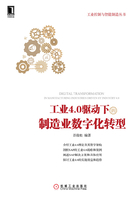
Foreword
As I write this it is obvious to all that, after decades of heady growth, China's manufacturing sector is having a tough time. The December 2015 Caixin/Markit manufacturing purchasing managers index came in at 48.2, its 10th straight month of decline and, in fact, the index has not seen three consecutive months on increase since July 2014.
There are, of course a number of factors behind this but the principle one is that China is no longer an inexpensive place to make things. In the space of a decade wages more than quintupled and together with currency appreciation, this resulted in the country's manufacturing cost rising close to those of the US. Underlying this is the aging of China's population: the number of people aged between 15 and 59 in China actually began to decrease in 2010 and by 2020 is projected to fall by 29.3 million, which is almost the same as the current population Saudi Arabia.
Clearly the manufacturing value proposition based on access to a seemingly infinite pool of cheap labor is well past its sell-by date. China's position as the“workshop of the world” is therefore under pressure and unless something is done to increase productivity faster than costs, the country could join other emerging economies stuck in the “middle income trap”.
So how can China's manufacturing sector put itself back on the path to prosperity? Well, as the saying goes: necessity is the mother of invention. There's a clear need for greater innovation among China's manufacturing companies, both in terms of products and business models.
Fortunately for the manufacturers, the Chinese government is well aware of the issues. In the past few years there's been an increasing level of interest within Chinese government circles in Industry 4.0, the German government's high-tech strategy for manufacturing and this has now matured into a full-fledged collaboration between the two countries. As a significant contributor to the realization of Industry 4.0 concepts SAP is naturally very pleased to see these being taken up in China's Internet Plus strategy and incorporated into the country's new 2016-2020 Five Year Plan.
In the pages of this book my colleagues from SAP's Industry Value Engineering group lay out the principles, best practices and examples of how manufacturing industries can be digitally transformed by leveraging Industry 4.0 strategies.
This is partly about smart manufacturing: the integration of manufacturing and IT that enables the manufacture of product variations in any given order and quantity, all on the same production line. While this will certainly help boost factory productivity, however, smart manufacturing solutions are really only half the answer to a deeper problem with China's manufacturing sector.
Apple-the world's most valuable company-is a classic example of this. It doesn't actually manufacture anything; that's all taken care of by contractors and suppliers mostly located in China. This ecosystem of companies employ millions of workers yet they get just a small slice of what Apple earns in hardware sales. And of course Apple's revenues are made not just from hardware sales but sales made through its various online stores and other services.
This points to another crucial element in the solution to China's long term manufacturing challenge: taking on more of the high value activities in the supply chain and ultimately creating global brands that can command very healthy profit margins. This is the gist of the “Made in China 2025” action plan, which aims is to integrate the mobile Internet, cloud computing, big data and the Internet of Things (IoT) with modern manufacturing.
It is therefore important to understand that the Industry 4.0 concept doesn't stop at the factory gates; it is tightly bound to IoT and that provides opportunity for Chinese manufacturers to start migrating toward a more innovative business model that adds greater value. For example, by delivering smart equipment that reports back on its performance, a manufacturer can accumulate and analyze large amounts of data, using SAP HANA®naturally, and establishing a platform for predictive maintenance services. Over time the manufacturer becomes more of a service provider, not just selling machines but a holistic package of services and usage models so that customer just uses the product without having to maintain them.
It is no secret that service innovation is where the big money is to be made these days. If China is to escape the middle income trap it needs to start building on its current manufacturing strengths and move down the pathway of opportunities that Industry 4.0 provides, as soon as possible.
Mark Gibbs
President of SAP Great China
January 2016